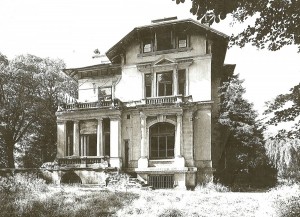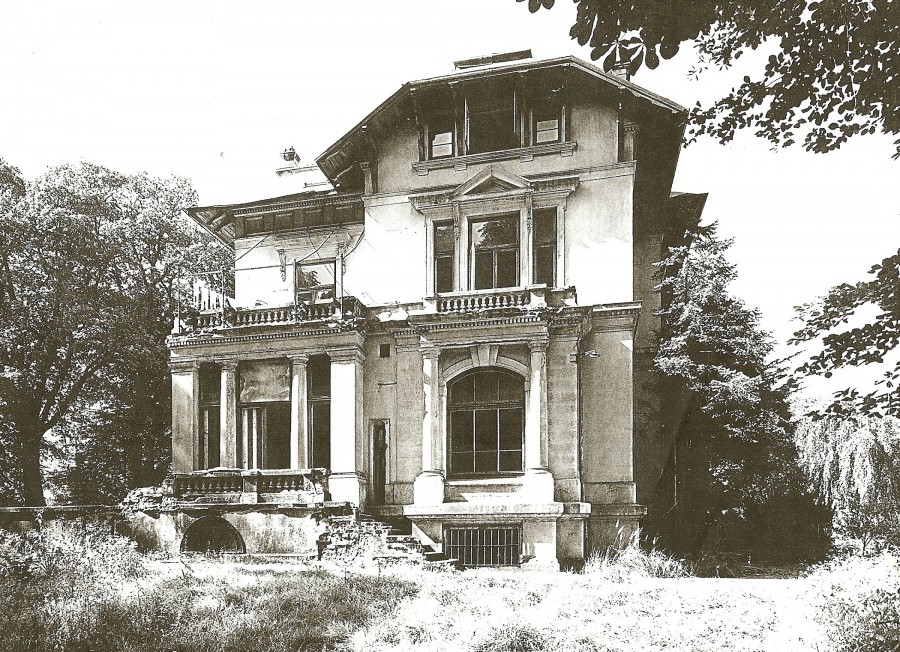After World War II, Germany was one of the most torn-apart countries. Despite the roll which Germany had played in World War II, leaders of The Church of Jesus Christ of Latter-day Saints (commonly known as the Mormon Church) were concerned for all who had suffered in the war and were anxious for the German Saints. As soon as they were permitted, they sent help, but before the Church was able to get there, many Saints pulled together to help rebuild their land, focusing a good deal on their religion and pulling fellow members together.
 In Hamburg, Germany, two brothers who were members of the local branch of The Church of Jesus Christ of Latter-day Saints were instrumental in helping to rebuild the Church in their area. On July 27, 1943, Hamburg was heavily bombed by more than 700 Allied aircraft in what was called Operation Gomorrah. The bombing created a firestorm with winds reaching 150 miles per hour and temperatures reaching 1500 degrees Fahrenheit resulting in the deaths of 40,000 people.
In Hamburg, Germany, two brothers who were members of the local branch of The Church of Jesus Christ of Latter-day Saints were instrumental in helping to rebuild the Church in their area. On July 27, 1943, Hamburg was heavily bombed by more than 700 Allied aircraft in what was called Operation Gomorrah. The bombing created a firestorm with winds reaching 150 miles per hour and temperatures reaching 1500 degrees Fahrenheit resulting in the deaths of 40,000 people.
Gerhard Fricke was twenty years old at the time of the bombing, but had escaped military service due to a speech impediment. His mother had joined the Mormon Church in 1910 and he and his younger brother, Harald, were both active in the local congregation. The entire family was miraculously preserved during the bombing, but afterwards both brothers were drafted into the army, with Gerhard being sent to the Western Front and Harald to the Eastern. Both were essentially prisoners of war for quite some time after the war ended, but both eventually made it back home.
Harald was a prisoner in Russia for one and a half years. When he was too sick to keep on, the Russians sent him home. After a four-week journey during which many others died, Harald finally made it hoe. After their returns, both boys became active in the Church again. Harald served as a bishop for 15 years and on the high council for 22 years. Now, at age 83, he continues to keep up the Hamburg Ward building.
Upon Gerhard’s return, he married and he and his new wife left a nice, new apartment to answer a call from their local congregational leader to restore the meetinghouse they had been allotted by the government. Any buildings were hard to come by, and the villa they were permitted to use was in shambles. Gerhard and his wife moved into this building and slowly rebuilt the whole thing. This building still serves as the meetinghouse for the Altona Ward in Hamburg, Germany. Through the Frickes’ continued dedication, the building is now protected under law as a state monument. Though Gerhard and his wife retired as the building’s caretakers nearly twenty years ago, they still live near it and continue to care for it. It is the dedication and sacrifice of such people as these which helped to strengthen the Church in Europe after World War II, bringing hope to people whose world had been destroyed and torn apart. The Church was able to bring much-needed aid to thousands through the efforts of the faithful Saints there.
Twitter •


 Watch a video about the restoration of the gospel on lds.org
Watch a video about the restoration of the gospel on lds.org
Hi Heather, I was interested in the article you wrote on the Fricke brothers of Altona, Hamburg, Germany and the church’s growth in that area. I have been trying to locate my ancestry that goes back to that area and wonder if I could get an address or contact details for the Fricke brothers to write and ask them if they know of my family there in Altona. They did leave there in the 1800’s and came to German occupied Samoa and finally settling in Tonga. However, I do believe that a branch of the family may have remained there. They weren’t members of the LDS Church but many of us who have descended from the Pacific Islands branch of our family have joined in great numbers and it would be great to finally get a glimpse of my German ancestry which has been difficult to extract over the years. I would appreciate your response and look forward to hearing from you shortly. Most kindly John Hettig. ps. William Jacob Diederich Hettig was the ancestor who was born around 1874 in Altona and moved to the Pacific around 1891.